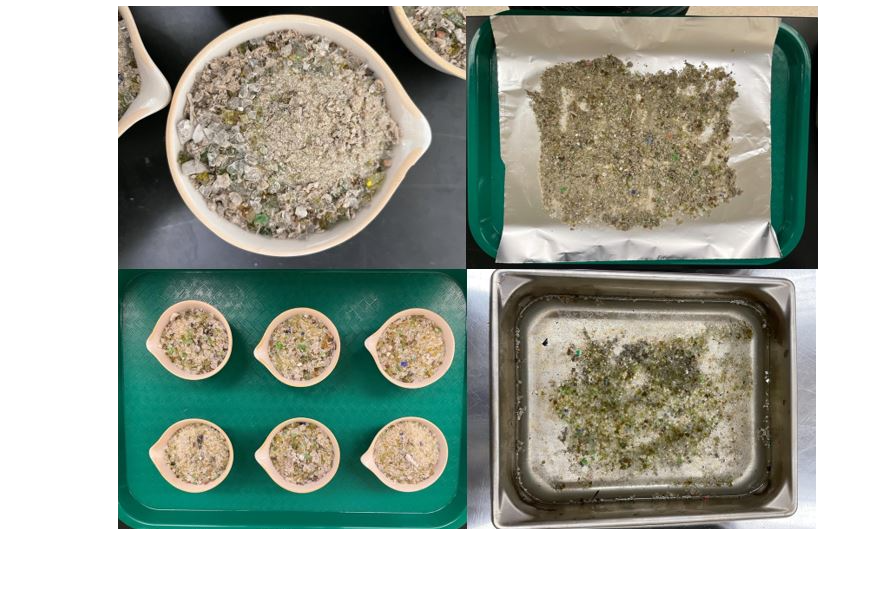Advanced Composite Materials
TIDC is investigating new materials to use for existing processes, including recyclable materials, to move towards more environmentally sustainable, cost efficient, and rapidly producible systems of production.
Advanced Composite Materials Featured Projects
Desktop Only

Project 2.18: Recycling Large-Scale 3D-Printed Polymer Composite Precast Concrete Forms
Large-scale thermoplastic composite extrusion-based 3D printing has been used in research labs and is moving into industry. One significant use of large-scale 3D printing has been to make forms for manufacturing precast concrete parts. Once the forms have been used for casting concrete parts, there is an opportunity to reuse the material and recycle the thermoplastic composite. Ideally, the 3D printed thermoplastic composite can be recycled into feedstock pellets that can be used again for 3D printing newer parts. However, the process of recycling 3D printed concrete forms is not well-established. Efficient ways of removing debris, cutting the 3D printed parts into smaller pieces, and pelletizing need to be figured out. The degradation in material properties with each recycling needs to be characterized and if necessary, a suitable ratio of a mix between virgin and recycled polymer needs to be determined. The cost of recycling needs to be evaluated and compared to the cost of the 3D-printed material.
Project 2.12: Evaluation of Processed Glass Aggregate for Utilization in Transportation Projects as A Sand Burrow.
“Sand borrow” is a sand-like material most commonly used as a sub-base under pavements. To provide good drainage and protect the pavement from frost heaves, the sand borrow material is required to have a low content of small particles. Sources of sand borrow material however are diminishing. Processed glass aggregate (PGA), produced from recycled glass, has a high potential to be used as a substitute for sand borrow.

Mobile Only

Project 2.18: Recycling Large-Scale 3D-Printed Polymer Composite Precast Concrete Forms
Large-scale thermoplastic composite extrusion-based 3D printing has been used in research labs and is moving into industry. One significant use of large-scale 3D printing has been to make forms for manufacturing precast concrete parts. Once the forms have been used for casting concrete parts, there is an opportunity to reuse the material and recycle the thermoplastic composite. Ideally, the 3D printed thermoplastic composite can be recycled into feedstock pellets that can be used again for 3D printing newer parts. However, the process of recycling 3D printed concrete forms is not well-established. Efficient ways of removing debris, cutting the 3D printed parts into smaller pieces, and pelletizing need to be figured out. The degradation in material properties with each recycling needs to be characterized and if necessary, a suitable ratio of a mix between virgin and recycled polymer needs to be determined. The cost of recycling needs to be evaluated and compared to the cost of the 3D-printed material.
Project 2.12: Evaluation of Processed Glass Aggregate for Utilization in Transportation Projects as A Sand Burrow.
“Sand borrow” is a sand-like material most commonly used as a sub-base under pavements. To provide good drainage and protect the pavement from frost heaves, the sand borrow material is required to have a low content of small particles. Sources of sand borrow material however are diminishing. Processed glass aggregate (PGA), produced from recycled glass, has a high potential to be used as a substitute for sand borrow.

